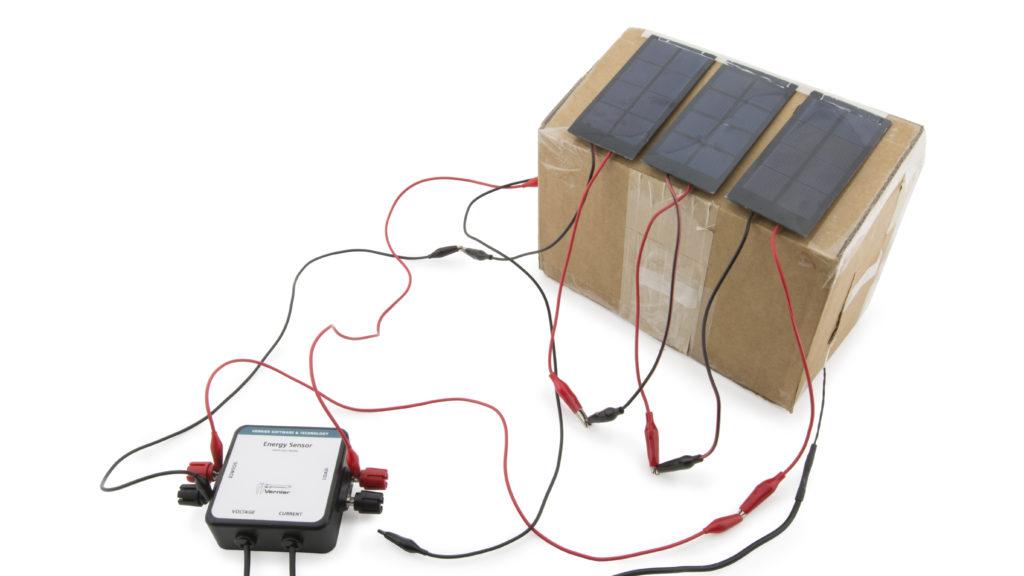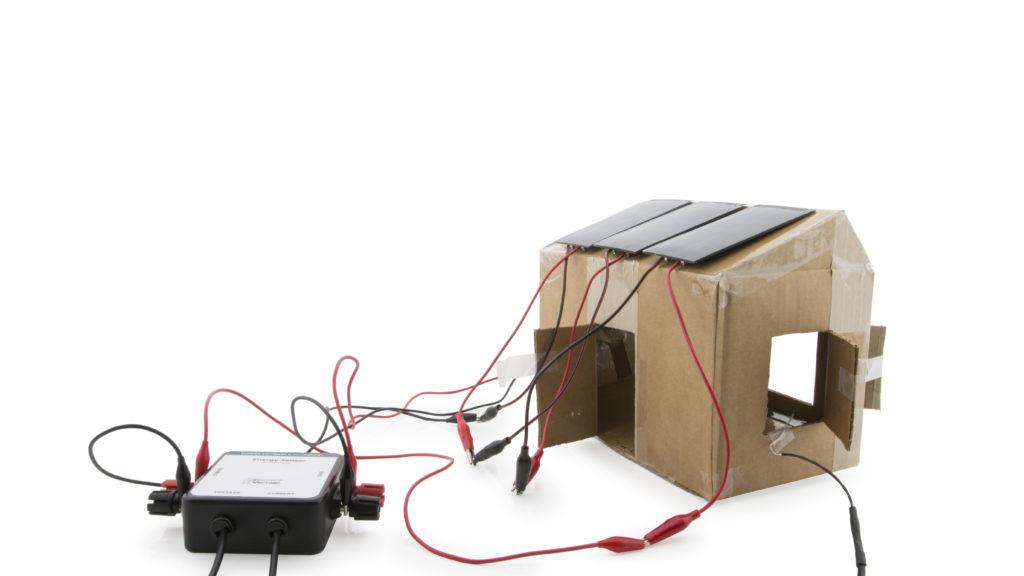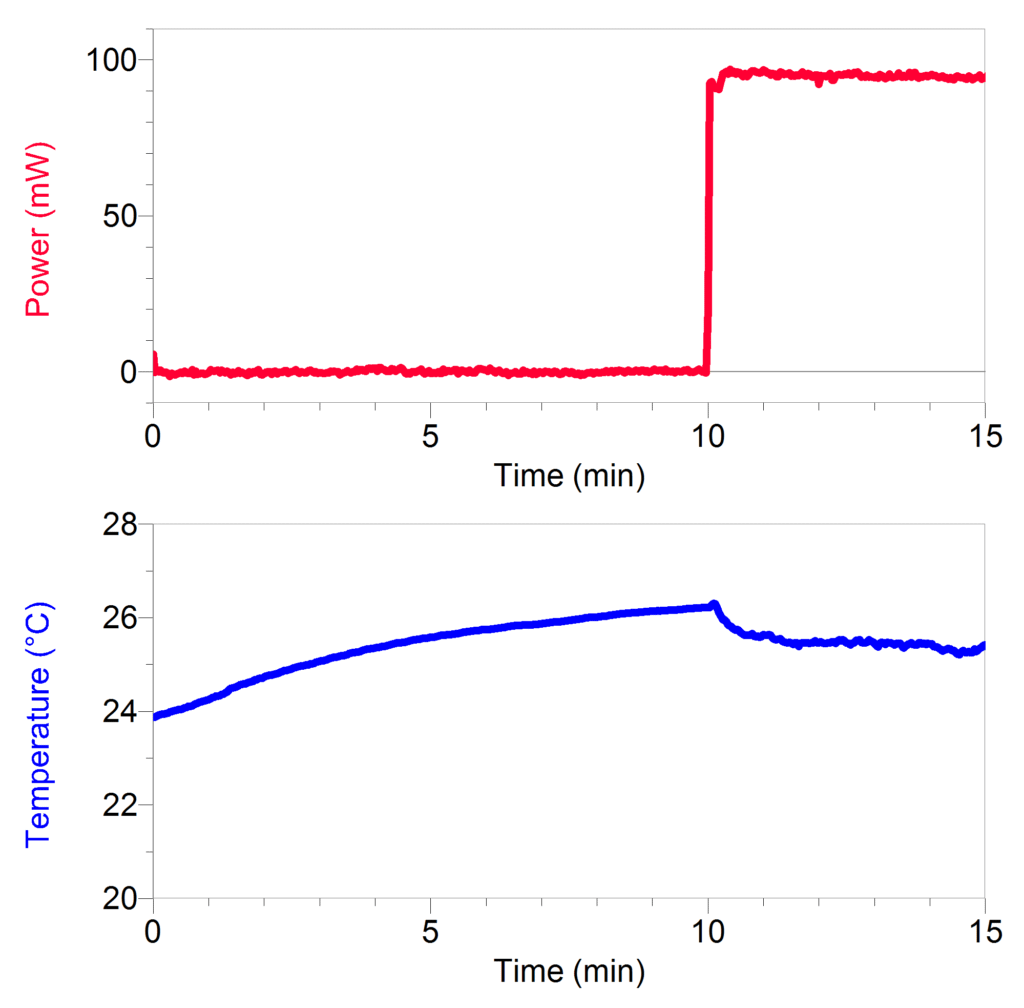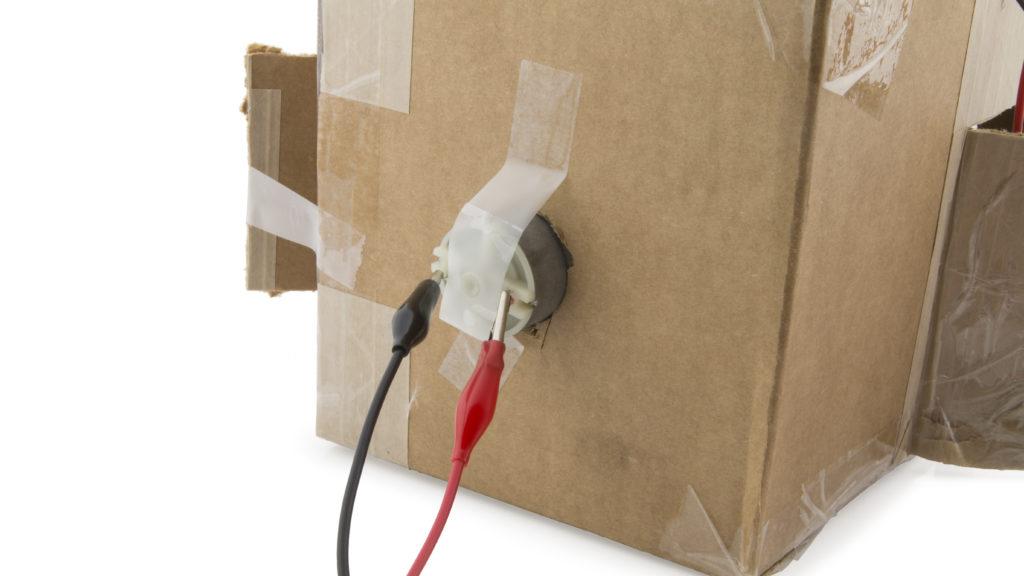It was a particularly sunny summer in Portland, Oregon, so we had many opportunities to experiment with the Vernier Energy Sensor, the Surface Temperature Sensor, and the Sun Angle Science Kit (which includes three KidWind 2 V/400 mA Solar Panels and the KidWind Power Output Pack).
We built a model home to explore the possibility of cooling a house using electrical energy from solar panels to power a fan mounted on the small motor that is included with the Power Output Pack. We used a 70 W halogen incandescent bulb as an energy source, heated the home for 10 minutes with the doors closed (Figure 1), and then opened the doors and connected the motor (Figure 2).


As can be seen in Figure 3, we found that the fan helped to cool the home and then maintained the temperature despite the fact that the lamp stayed on throughout the data-collection period.

Using an incandescent bulb as the energy source allowed us to explore the effects of variables such as size and type of window cover. Given more time, we think it would be interesting to explore the effects of different types of roofing material, the use of insulation, and the presence of a heat sink inside the home.
We also successfully performed the experiment outdoors using sunlight as the energy source. Because the house heated much more quickly when collecting data outside, we set the data-collection duration to 10 minutes (5 minutes of heating followed by 5 minutes of cooling). Our data showed a similar overall pattern to that in Figure 3, but the maximum power output levels were close to 900 mW, and the fan turned much more quickly.
See Figures 4 and 5 for additional views of the model home:


